As you celebrate Christmas with your family’s traditions this year, enjoy this intimate look at a Maasai Christmas — captured by Compassion Kenya photojournalist Kevin Ouma.
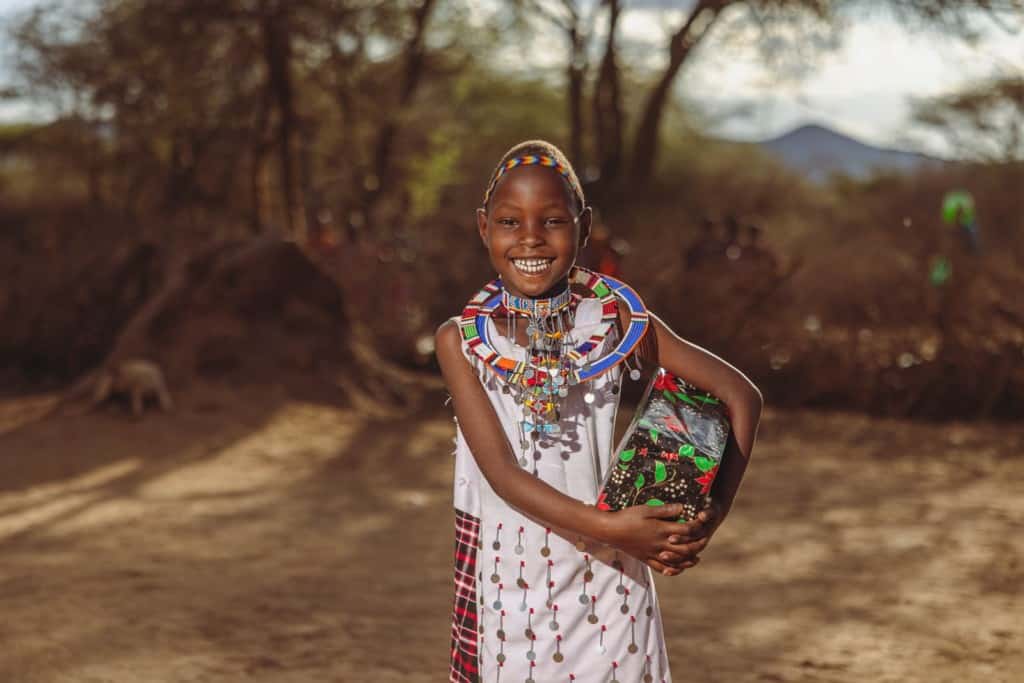
Pesi dashes away from her friends Sompet, Haimesoi and Marania as they play catch. The sound of laughter fills the air as they play and run around the home. The compound is full of people. Everyone is happy to see one another as the older men and women sit separately underneath the trees catching up.
She lives in a Kenyan village that is home to Maasai people, who live mainly along Kenya’s Rift Valley and across the Tanzanian border to the south. Maasai have a strong culture that is still preserved today. Compassion has the privilege of working with children from many different cultures across the world. Church partners support the children while celebrating their unique traditions. Community and family ties form a big part of Maasai celebrations — and Christmas is no exception.
Different cultures stamp their own identity on the special holiday, fusing local traditions and ways with celebrating Christmas. Seven-year-old Pesi is part of the Child Sponsorship Program at a church in Kenya. Every year since she can remember, her family has celebrated Christmas.
“I love Christmas because I get to see many friends and family,” she says. “What I love most is when everyone comes together to sing.”
A Day of Traditions
Pesi’s father is the firstborn in his family. As such, he hosts family and friends in his homestead. Activities start from the early morning with the preparing of a goat or sheep that was slaughtered the day before. The meat is roasted away from the home by men. When it’s ready to eat, different parts of the animal are allocated to the men, women and children. Women prepare most of the food — chapati bread and stew make up a big part of the meal. Older children are sent to fetch water and firewood while the younger ones like Pesi play or do the chores delegated by their mothers.
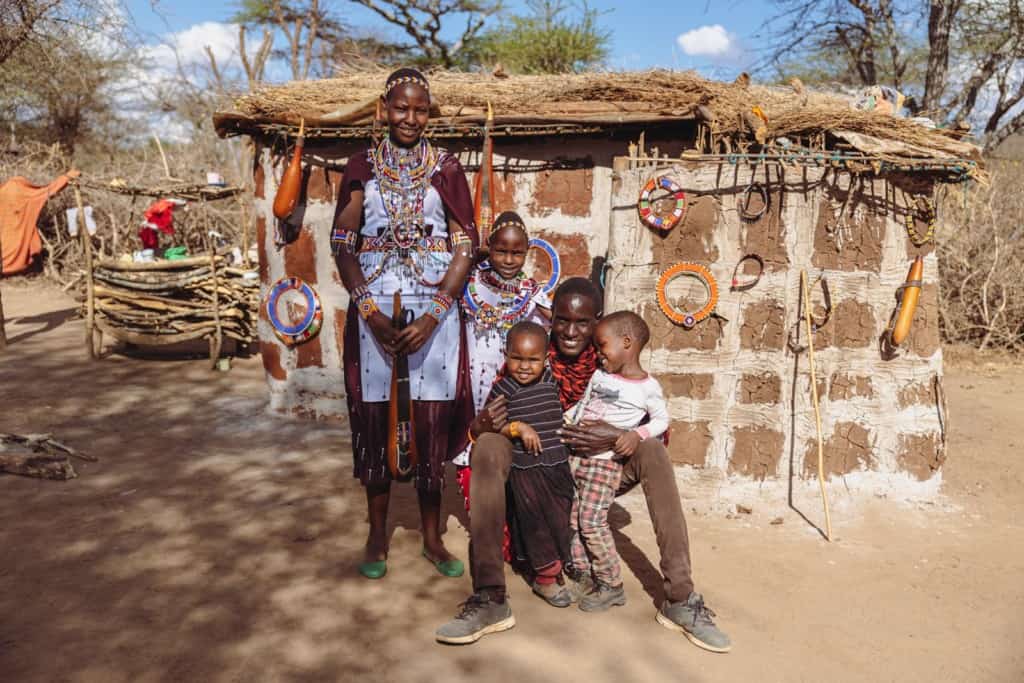
As part of the preparations, the home is decorated using beaded artwork that most Maasai women make at home. The women and girls put on robes and gowns with intricate beadwork.
The Maasai clothes and beads have specific colors, all with special meanings:
- Red, which is the most dominant color, signifies blood, bravery and unity.
- White represents health, peace and purity.
- Blue is the color of the sky and represents energy, and green is the color of grass, which signifies the land and production.
- Black represents the people and the struggle they must endure.
- Yellow symbolizes the sun, fertility and growth, and orange represents warmth, generosity and friendship.
Pesi is wearing a white gown with beadwork. Her mother did the beadwork after having the gown made in the market.
Gifts and Joy
The church ensures all of the Maasai children understand what Christmas is really about. “We always make it a special day and try to bring everyone together so that it is remarkable to our children,” says Becky, the social worker at Pesi’s Compassion center. “All people involved in the children’s lives gather at the church to celebrate and have a special meal together.”
In addition to throwing a party, the church ensures children receive a Christmas gift. “The gift makes me feel special. I started receiving Christmas gifts when I joined Compassion,” says Pesi. Most of the gifts the children receive include shoes, clothing and sometimes candy and pastries as extras, which the children love very much.
Becky lives in the same community, and she knows the difference the gifts make in the lives of the children. “It is difficult for the children to receive gifts in the village, so when such is done it is a true expression of God’s love,” she says.
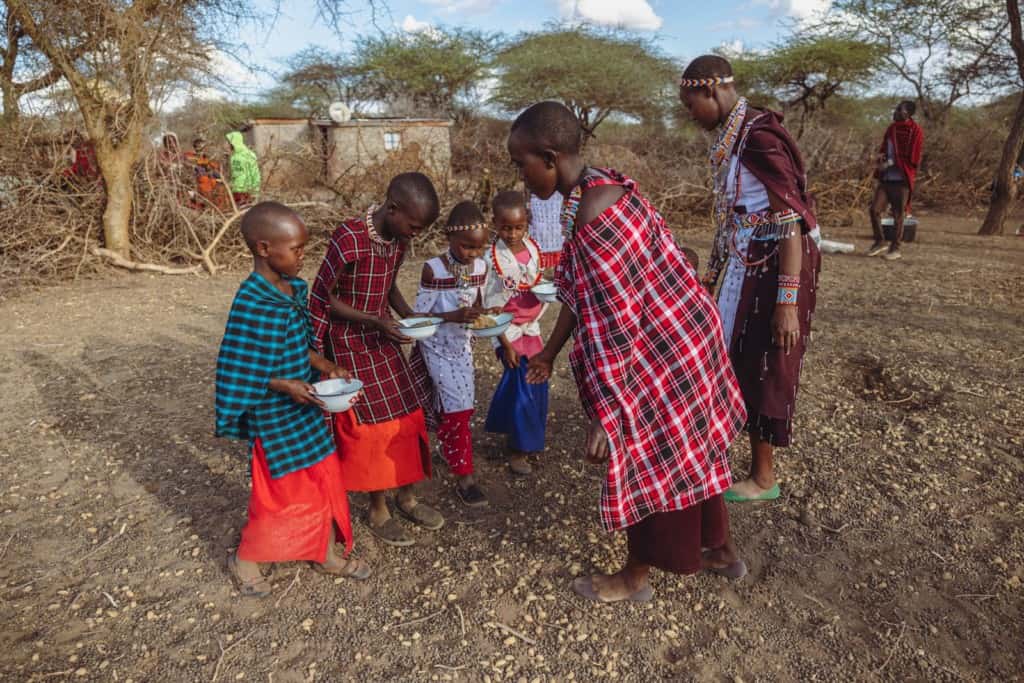
Pesi and her friends have just been served some stew with chapati. They eat while sitting on the ground. The girls are eating fast so they don’t miss out on the singing and dancing. “I love that as Maasai we get to sing together during celebrations while wearing our traditional clothes and ornaments,” says Pesi.
Boys sing and chant in Maasai, praising God. They also blow horns and pipes as they go around in a circle. Pesi and her friends follow the women and join in the singing.
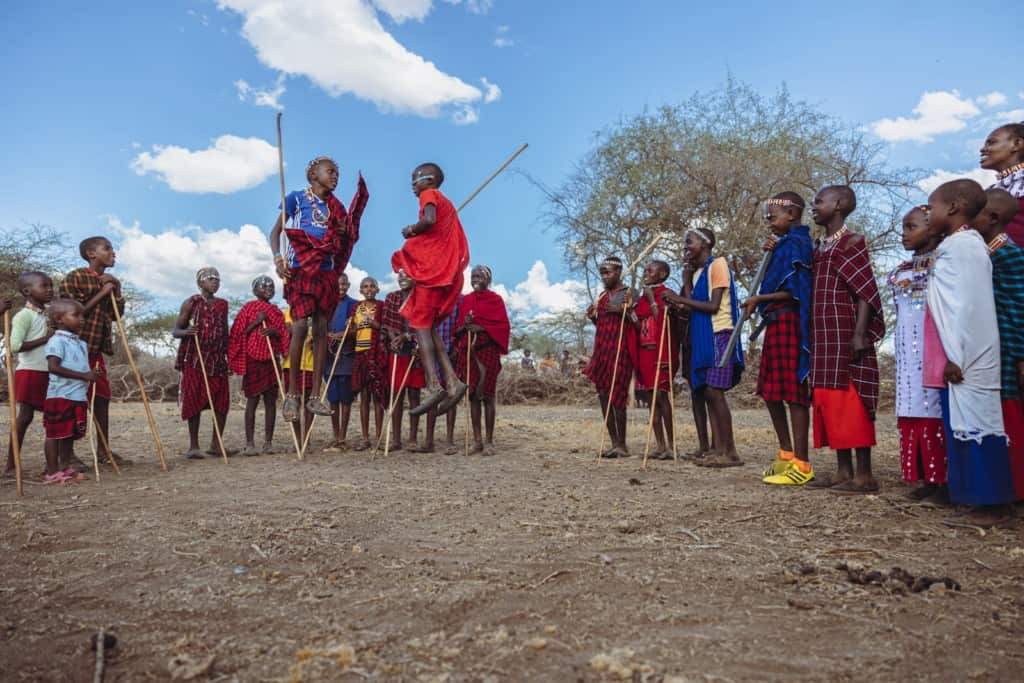
A Maasai Christmas Evening
As darkness sets in, guests trickle out of the homestead one by one, filled with joy and laughter as they bid each other goodbye. The moment is bittersweet, for it has been a good day. Babies yawn in their mothers’ arms and younger children hold on to their mother’s shukas (traditional fabric). The men start a fire to continue sitting under the starry sky. In the distance, bleating goats and mooing cows can be heard.
Pesi joins her family by the fire as they listen to her grandfather share stories in her language. There are many things to be thankful for and memories to recount. She will share the experience in her next letter to her sponsor.
As we reflect on all Christ has given to us, you may feel called to give as he gave. There’s still time to make an end-of-year donation to help children. Click here to give by Dec. 31 to be eligible for a 2021 tax benefit!

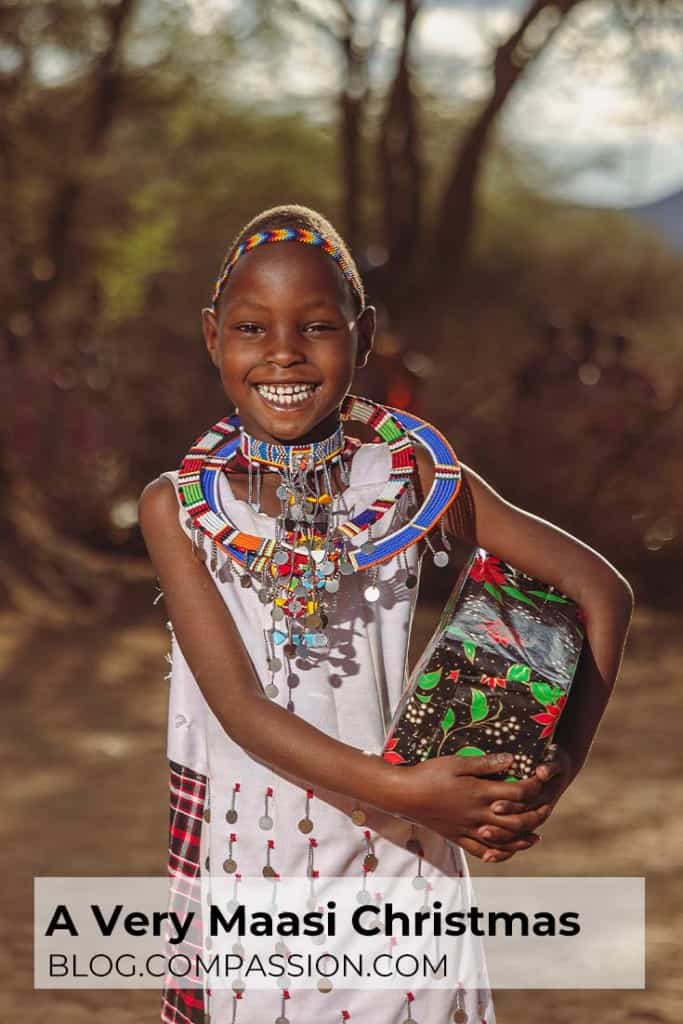
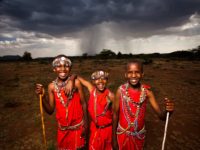




1 Comment |Add a comment
Such a beautiful picture of a community celebrating Christmas in a genuine way.
May God bless all of His children.